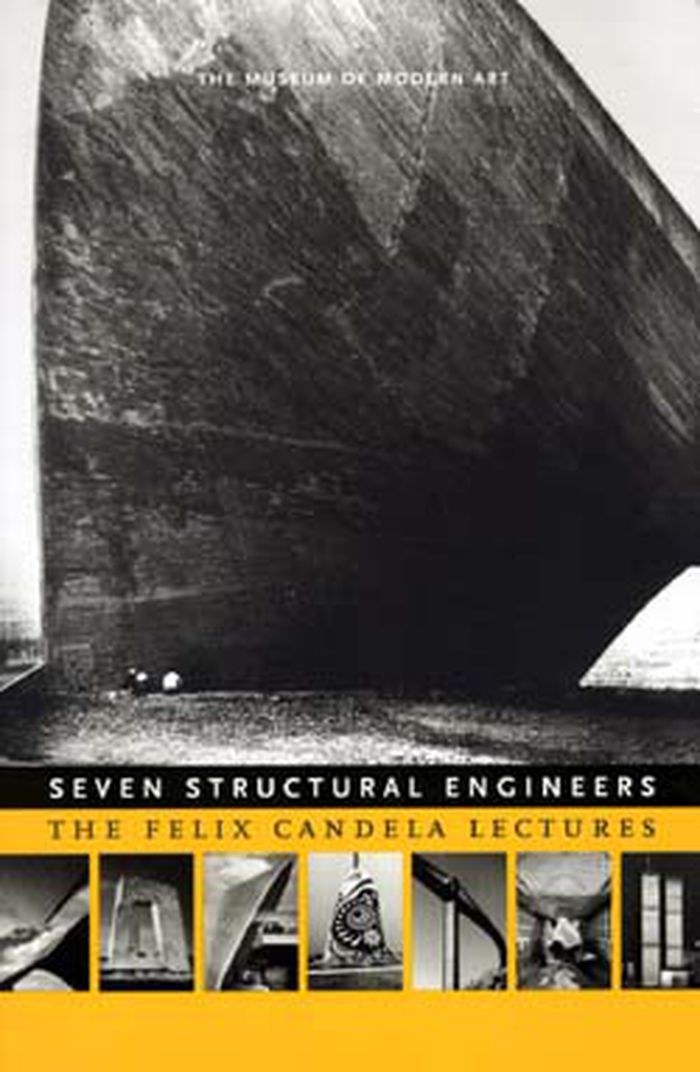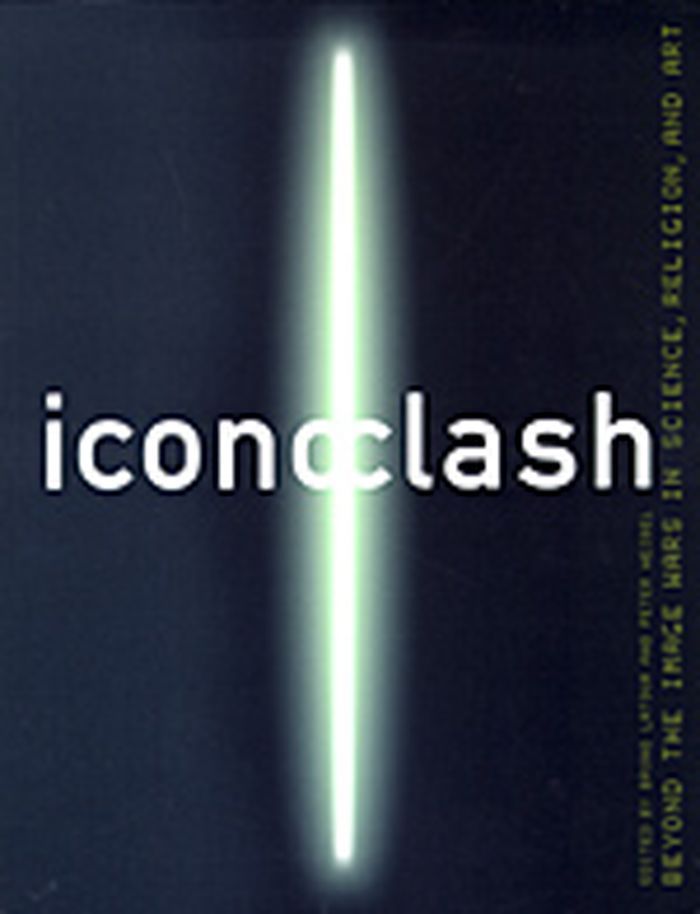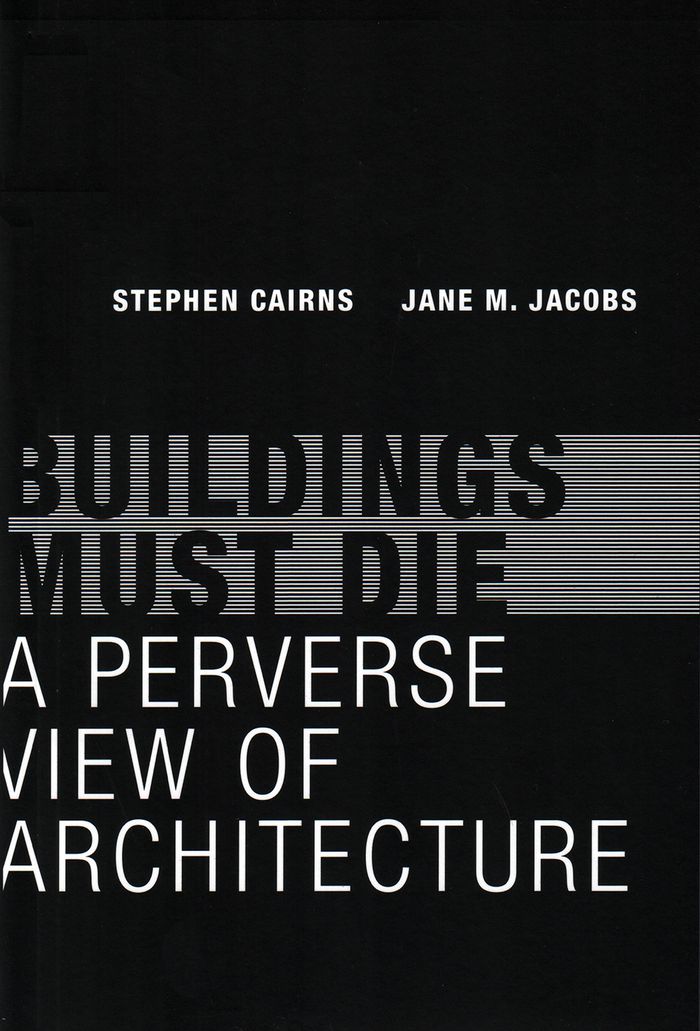$51.00
(disponible sur commande)
Résumé:
Between 1998 and 2005, the Structural Engineers Association of New York, along with the Museum of Modern Art's Department of Architecture and Design and the School of Architecture at both Princeton University and MIT, co-sponsored a lecture series in honor of the renowned Spanish and Mexican structural engineer Felix Candela, who led the early exploration of concrete(...)
Seven structural engineers: the Felix Candela lectures
Actions:
Prix:
$51.00
(disponible sur commande)
Résumé:
Between 1998 and 2005, the Structural Engineers Association of New York, along with the Museum of Modern Art's Department of Architecture and Design and the School of Architecture at both Princeton University and MIT, co-sponsored a lecture series in honor of the renowned Spanish and Mexican structural engineer Felix Candela, who led the early exploration of concrete shell structures. These lectures are now available in the format of this book: discussed is the work of the Uruguayan engineer Eladio Dieste, who pioneered the use of thin, light-filled shell structures in masonry. Cecil Balmond recounts his collaboration with architects Rem Koolhaas and Daniel Libeskind. The Swiss bridge designer Christian Menn discusses his iconic long-span prestressed concrete bridges, including the new Charles River Bridge in Boston. Leslie E. Robertson, who is especially known for his work on the structural design of the World Trade Center complex with Minoru Yamasaki, discusses this design along with many other projects. Mamoru Kawaguchi recounts his own work in fabric structures and his collaboration with architects Kenzo Tange and Arata Isozaki. Joerg Schlaich talks about his creative collaboration with Frank Gehry. Heinz Isler's contribution is in the aerea of freeform concrete shell constructions. David Billington and Maria Garlock recount the work of master builders Anton Tedesko, Pier Luigi Nervi, Felix Candela, and Heinz Isler.
Structures d’ingénierie
$63.00
(disponible sur commande)
Résumé:
This book, which accompanies a major exhibition at the Center for New Art and Media (ZKM) in Karlsruhe, Germany, invokes three disparate realms in which images have assumed the role of cultural weapons. Monotheistic religions, scientific theories, and contemporary arts have struggled with the contradictory urge to produce and also destroy images and emblems. Moving(...)
Théorie de l’architecture
juillet 2002, Cambridge, Mass.
Iconoclash : beyond the image wars in science, religion, and art
Actions:
Prix:
$63.00
(disponible sur commande)
Résumé:
This book, which accompanies a major exhibition at the Center for New Art and Media (ZKM) in Karlsruhe, Germany, invokes three disparate realms in which images have assumed the role of cultural weapons. Monotheistic religions, scientific theories, and contemporary arts have struggled with the contradictory urge to produce and also destroy images and emblems. Moving beyond the image wars, ICONOCLASH shows that image destruction has always coexisted with a cascade of image production, visible in traditional Christian images as well as in scientific laboratories and the various experiments of contemporary art, music, cinema, and architecture. While iconoclasts have struggled against icon worshippers, another history of iconophily has always been at work. Investigating this alternative to the Western obsession with image worship and destruction allows useful comparisons with other cultures, in which images play a very different role. ICONOCLASH offers a variety of experiments on how to suspend the iconoclastic gesture and to renew the movement of images against any freeze-framing. The book includes major works by Art & Language, Willi Baumeister, Christian Boltanski, Daniel Buren, Lucas Cranach, Max Dean, Marcel Duchamp, Albrecht Dürer, Lucio Fontana, Francisco Goya, Hans Haacke, Richard Hamilton, Young Hay, Arata Isozaki, Asger Jorn, Martin Kippenberger, Imi Knoebel, Komar & Melamid, Joseph Kosuth, Gordon Matta-Clark, Tracey Moffat, Nam June Paik, Sigmar Polke, Stephen Prina, Man Ray, Sophie Ristelhueber, Hiroshi Sugimoto, and many others.
Théorie de l’architecture
Buildings must die
$38.95
(disponible sur commande)
Résumé:
Buildings, although inanimate, are often assumed to have “life.” And the architect, through the act of design, is assumed to be their conceiver and creator. But what of the “death” of buildings? What of the decay, deterioration, and destruction to which they are inevitably subject? And what might such endings mean for architecture’s sense of itself? In Buildings Must Die,(...)
Buildings must die
Actions:
Prix:
$38.95
(disponible sur commande)
Résumé:
Buildings, although inanimate, are often assumed to have “life.” And the architect, through the act of design, is assumed to be their conceiver and creator. But what of the “death” of buildings? What of the decay, deterioration, and destruction to which they are inevitably subject? And what might such endings mean for architecture’s sense of itself? In Buildings Must Die, Stephen Cairns and Jane Jacobs look awry at core architectural concerns. They examine spalling concrete and creeping rust, contemplate ruins old and new, and pick through the rubble of earthquake-shattered churches, imploded housing projects, and demolished Brutalist office buildings. Their investigation of the death of buildings reorders architectural notions of creativity, reshapes architecture’s preoccupation with good form, loosens its vanities of durability, and expands its sense of value. It does so not to kill off architecture as we know it, but to rethink its agency and its capacity to make worlds differently. Cairns and Jacobs offer an original contemplation of architecture that draws on theories of waste and value. Their richly illustrated case studies of building “deaths” include the planned and the unintended, the lamented and the celebrated. They take us from Moline to Christchurch, from London to Bangkok, from Tokyo to Paris. And they feature the work of such architects as Eero Saarinen, Carlo Scarpa, Cedric Price, Arata Isozaki, Rem Koolhaas and François Roche.
Théorie de l’architecture
$72.00
(disponible sur commande)
Résumé:
In this collection, Hans-Ulrich Obrist interviews everyone, including Marina Abramovic & Gregory Chaitin / Vito Acconci / JG Ballard / Matthew Barney / Dara Birnbaum / Christian & Luc Boltanski / Stefano Boeri / Daniel Buren / Giancarlo de Carlo / Maurizio Cattelan / Johannes Cladders / Constant / Giancarlo de Carlo / Olafur Eliasson / Brian Eno / Esquivell / Yona(...)
janvier 1900, Milan
Hans Ulrich Obrist : interviews, volume 1
Actions:
Prix:
$72.00
(disponible sur commande)
Résumé:
In this collection, Hans-Ulrich Obrist interviews everyone, including Marina Abramovic & Gregory Chaitin / Vito Acconci / JG Ballard / Matthew Barney / Dara Birnbaum / Christian & Luc Boltanski / Stefano Boeri / Daniel Buren / Giancarlo de Carlo / Maurizio Cattelan / Johannes Cladders / Constant / Giancarlo de Carlo / Olafur Eliasson / Brian Eno / Esquivell / Yona Friedman / Hans Georg Gadamer / Gilbert and George / Edouard Glissant / Felix Gonzalez-Torres / Dominique Gonzalez Foerster / Douglas Gordon / Dan Graham / Joseph Grigely / Zaha Hadid / Stuart Hall / Thomas Hirschhorn /Carsten Höller / Walter Hopps / Roni Horn / Yong Ping Huang / Pontus Hulten / Pierre Huygue / Arata Isozaki / Billy Klüver / Rem Koolhaas / Bul Lee / Sarat Maharaj and Francisco Varela / Ernest Mancoba / Roberto Matta / Cildo Meireles / Jonas Mekas / Mario Merz / Santu Mofokeng / Yoko Ono / Gabriel Orozco / Frei Otto / Lygia Pape / Claude Parent / Philippe Parreno / Michelangelo Pistoletto / Ilya Prigogine / Jacques Ranciere / Gerhard Richter / Pipilotti Rist / Israel Rosenfield / Jean Rouch / Anri Sala / Katzuyo Sejima / Ettore Sottsass / Luc Steels / Rirkrit Tiravanija / Agnès Varda / Lawrence Weiner / Franz West / Cerith Wyn Evans / Anton Zeilinger It is not an exaggeration to write that Hans-Ulrich Obrist is everywhere, has curated everything and has interviewed everyone. If "peripatetic" is the word most overused to describe him, it is not inappropriate. The Swiss-born, everywhere-based curator and head of the Programme Migrateurs at the Musée d’Art Moderne de la Ville de Paris has an unstoppable wanderlust and a related symptom: his penchant for interviewing anyone and everyone who piques his curiosity, be they artist, scientist, writer, curator, composer, architect, thinker, etc. Since 1993, Obrist has conducted more than 300 interviews, 75 of which are collected here in a selection that respects the cultural and professional diversity of the interviewees. Each interview is introduced by a short text outlining the biography of the interviewee and giving some contextual information on the recording of the interview.



